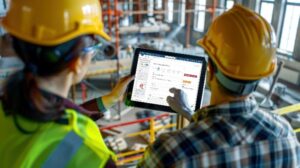Latest articles
Discover our most recent posts across all industries, brands and topics.
Explore our topics
Discover stories on key trends that are transforming the business and social landscape.
Company News
Keep up with the latest happenings at Dassault Systèmes.
Design & Simulation
Today’s challenges are being met with innovative design and manufacturing and improve through simulation.
Editor’s picks
Explore our favorite stories
Company News
What is Dassault Systèmes?
For the past 40+ years, Dassault Systèmes has touched the world through breakthroughs that have…
Company News
Developing an electric truck from the ground up
Harbinger is redefining the medium-duty truck segment with its innovative electric vehicle featuring a reimagined,…
Workforce of the future
The Power of Mentorship
Dassault Systèmes, in collaboration with Women in Tech, is hosting a Female Networking Event in…
Company News
7 innovative approaches to cancer treatment
In honor of Breast Cancer Awareness Month, we’re spotlighting seven innovative approaches to cancer treatment…
Company News
Mobility Night Ride was a celebration of technology…
Ride along with Dassault Systèmes and Kazuhiko Kanno and experience a future of inclusive mobility…
Manufacturing
Building a block of flats like you’d build…
Like many industries faced with an ever-changing landscape and increasingly pressing ecological concerns, Architecture, Engineering…
Cloud
Biotherapeutics: What Do We Make Next?
For years, computational methods for small molecule drug design have offered numerous algorithms and methodologies…
Manufacturing
What is AR in Manufacturing?
Are you new to the manufacturing, operations or supply chain sector? A recent hire or…
MES Implementation Strategies for Cost Savings and Improved…
MES systems enhance operational efficiency, provide substantial cost savings, ensure quality control, help with regulatory…
Latest articles from brands
Learn more about our portfolio of 3D modeling applications, simulation applications creating virtual twins, social and collaborative applications, and information intelligence applications.




























